For inventors and engineers, war has always been an excellent testing ground. The history of bloody conflicts is also the history of subsequent inventions that were aimed at improving military operations and getting rid of the enemy faster and more effectively. What was on our list?
10. Circle
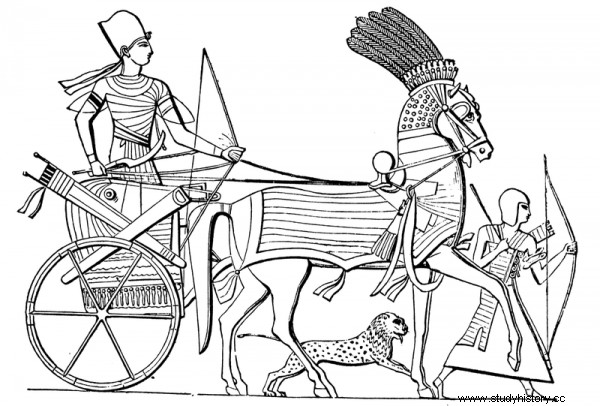
The wheel improved the maneuvers on the battlefield itself. Egyptian light chariot shown.
People of the 21st century take them as something so obvious that it is almost inconspicuous, but in just three and a half thousand years BC the wheel revolutionized the way the army moved . From then on, they could not only conduct raids into enemy territories, but above all - they had adequate facilities to survive there during sieges or longer clashes. Understandably, the carts slowed the movement of the army, but their ability to transport food, loot or wounded proved invaluable.
9. Gunpowder
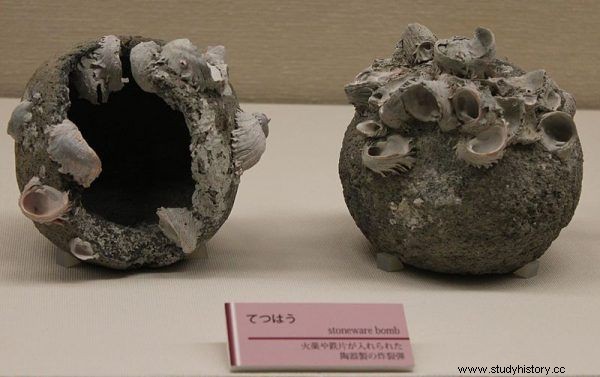
Japanese bombs from the 13th century.
In the Far East, around the ninth century AD, the Chinese invented a substance that changed the course of many battles and wars. Were it not for the gunpowder, a person's ability to murder his fellow men would be much less. European armies learned to use it only after several centuries, but in the nineteenth century they used it without any scruples in the fight against the fallen Middle Kingdom. With great success.
8. Firearms
Like gunpowder, firearms already appeared in 9th-century China. For a long time, armies fought, primarily using steel or animal strength. Meanwhile, the first cannons or rifles changed the face of battles, making the fight less honorable . However, it was a slow and time-consuming process. It should be emphasized that the spread of firearms completely changed the war strategy and influenced the mentality of soldiers. The inevitability of death and its speed slowly shaped the characters of the next military generations.
7. Telegraph or communication
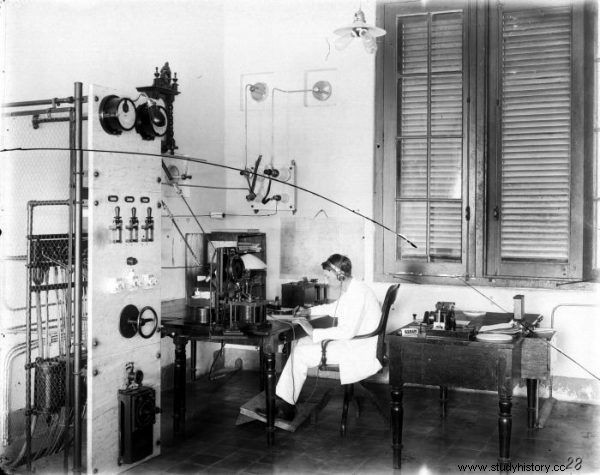
Good connectivity is essential for major military operations.
An apparent and often overlooked invention that does not pose an immediate threat to life, but when used at the right time, allows you to achieve an instant advantage . It was the information obtained thanks to it that allowed commanders to set up defense lines or surprise the enemy. Modern radar is an extension of these techniques, which allows you to instantly track enemy troops. The beginnings were not as impressive as the communication methods we know today, but the awareness of the need for battlefield contact remained just as strong.
6. Machine gun
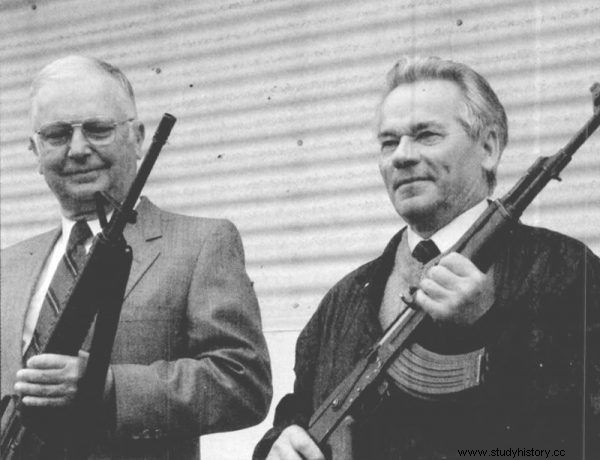
Eugene M. Stoner and Mikhail Kalashnikov with rifles of their design.
Effective use of gunpowder and the principles of physics. It is thanks to the lightning-fast possibility of sowing missiles that the world of 19th-century cavalry charges has gone down in history. The simple Maxim rifle - the prototype of the first machine gun - has already gained great popularity. Over the course of several decades, hundreds of millions of people have paid their lives to encounter successive versions of this invention . The British were pioneers in this field. As Lawrence Freedman writes in his book "The Future of War":
The Maxim-type killing machine gun was first used by British troops during the Matabella war in Rhodesia in 1893-1894. Before 1914, however, countries had acquired very few rifles of this brand and the like. The situation changed only at the beginning of the First World War, when they proved their advantages in defense operations.
Russian technical thought in the person of Dr. Mikhail Kalashnikov brought this deadly tool to perfection. The AK automatic rifle and its subsequent incarnations remain a part of the armament of many armies in the world, and the name of the Russian inventor has been permanently attached to this type of weapon.
5. Tank
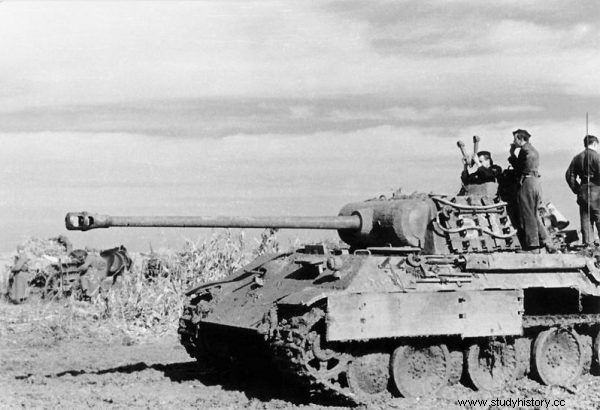
One of the best German tanks from World War II was the Panther. Photo from the Eastern Front.
Warfare specialists have waited a long time to create an indestructible machine. And although the tank is only the beginning of this concept, it remains a unique idea to this day. It was first used on a massive scale during World War I, but only the lightning war showed what it can actually be on the battlefield. Descriptions of the largest tank battle that took place on the Kursk Arch are chilling. The multi-day orgy of destruction in which the German Panthers clashed with the Soviet T-34s claimed hundreds of thousands of lives.
4. Submarine
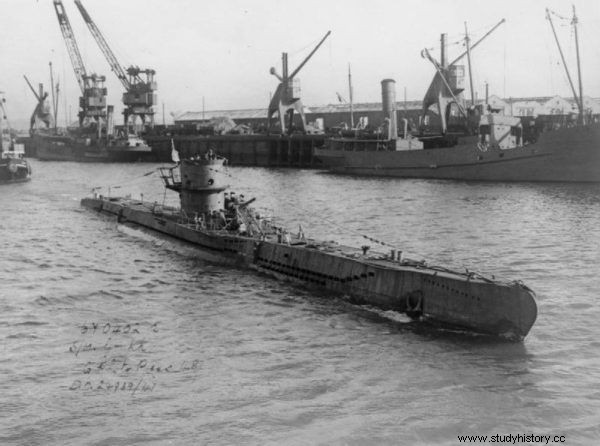
German U-boats inflicted huge losses on the Allies in the initial phase of World War II. In photo U-570.
Although prototypes were created in the nineteenth century, it was only the next century that revealed the true use of underwater death machines. Thanks to the U-boats, the precision of the Kriegsmarine's operation in sea waters was incredible. The German army boasted an excellent shipbuilding industry. During World War II, British-American convoys were destroyed en masse on their way to Soviet ports. As Brian Johnson writes, a BBC journalist who explored the technical secrets of the wars of the 20th century :
Until the end of 1940, a handful of German submarines were very successful. 443 merchant ships with a total displacement of 2.5 million tons were sunk. and the British carrier HMS Couragelous […].
In the second half of the twentieth century, the USSR adopted a strategy of water control by submarines. The end of the development of this technology was the accident of Kursk, a nuclear class ship in 2000.
3. Helicopter
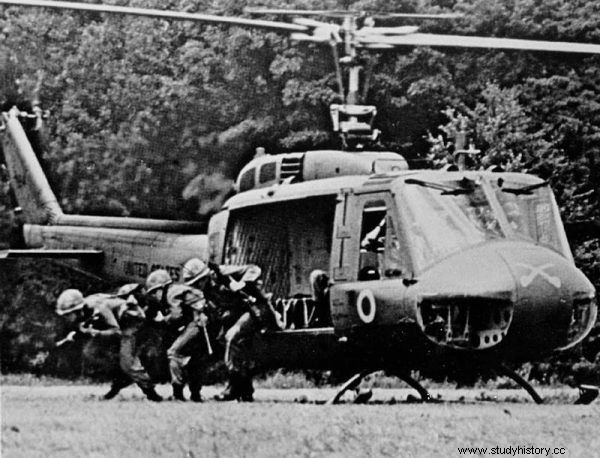
In Vietnam, helicopters have wreaked havoc. Bell UH-1D shown.
The beginnings of attempts to construct airplanes with a rotor date back to just before the First World War. However, various concepts were recognized only during the Second World War. The machine was initially used mainly for transporting the wounded. During the Korean War, the Bell H-13 helicopter triumphed:the precision of flight and speed of action allowed the American troops to operate effectively in mountainous terrain. But only the Vietnam War showed how deadly an effective tool in the hands of the army can be a helicopter equipped with a light machine gun.
2. The plane
It was known almost from the moment the Wright brothers first took to the air in 1903 that this particular invention would revolutionize warfare. Just five years later, the writer Herbert George Wells predicted that airplanes would "inevitably draw civilians, their homes and the entire fabric of social life into warfare" . Lawrence Freedman in his book "The Future of War" emphasizes, however, that while flying machines changed the nature of conflicts, they do not necessarily help to resolve them:
Planes are unable to hold a given territory, so they cannot "win" wars by themselves. (...) this fact was generally noticed by military aviation enthusiasts in the interwar period.
1. Nuclear weapons
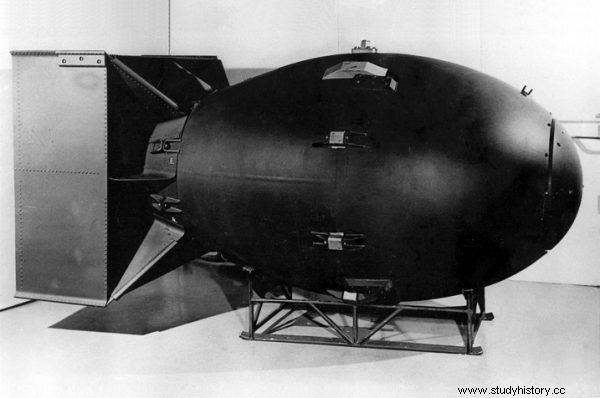
The nuclear bomb changed the face of wars, bringing the specter of total destruction. The photo shows a model of Fat Man - a bomb dropped on Nagasaki.
The work on perfect weapons is ongoing, but humanity has already managed to create something that carries the threat of total annihilation . Nuclear tests in the United States in the 1940s soon allowed the Americans to successfully end the war. The attacks on Hiroshima and Nagasaki in August 1945 led to the surrender of Japan.
In the post-war period, world powers became more and more aware of the dangers of using nuclear warheads. However, the gradual reduction of the nuclear arsenal was slow. Now, with President Vladimir Putin's new war strategy, nuclear weapons seem to be experiencing a renaissance ...
